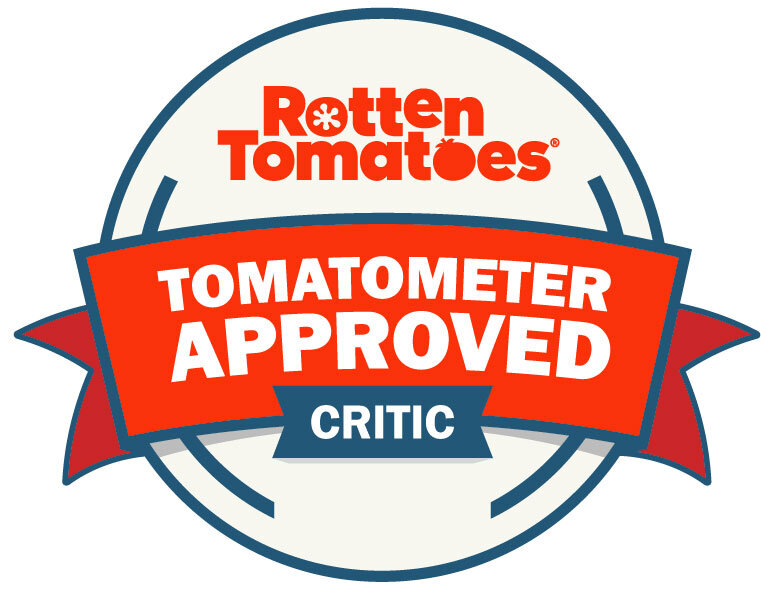Possessing a Sharp Tongue and Bountiful Sand
2010 // USA // Joel and Ethan Coen // December 28, 2010 // Theatrical Print (AMC Esquire)
B+ - True Grit finds the Coen Brothers, those mischievous delvers of American genre, working for the first time within the parameters of the classical Western, a form that they pursue in a curiously straightforward manner, by and large without their customary cocked eye. The Coens have never been deconstructionists, preferring to employ genre as a valid tool to explore their perennial thematic preoccupations. These, of course, include the random preposterousness of the cosmos, the failure of carefully constructed worldviews, the fundamental venality of humanity, and--when relief from such dire considerations is warranted--the glimmers of comfort that are nonetheless attainable from time to time, usually by means of a simple adjustment in outlook. One might expect these typical concerns to be highlighted in the Brothers' adaptation of Charles Portis' novel about a precocious fourteen-year-old girl searching for her father's murderer in mid-nineteenth-century Indian Territory. However, the source material seems to have compelled to Coens to venture into fresh thematic terrain. While their trademark absurdism still rears its head in places, the film is foremost fixated on the problem of moral systems, and how they are developed, hardened, and revealed. True Grit is also, not coincidentally, the Coens' most intently psychological film in years. While it never attains the searing cinematic greatness of their recent existential pictures (No Country For Old Men and A Serious Man), it possesses the undeniable appeal of a work made by two masters operating slightly outside their comfort zone.
In an opening voiceover, young Arkansan Mattie Ross (a heavenly Hailee Steinfeld) explains her unhappy dilemma: a no-good cowardly drunk named Tom Chaney (Josh Brolin, channeling Ted Levine) has shot and killed her father over a perceived slight, and fled into the Territory with the slain man's horse and money. Mattie is a bright, blunt-spoken firecracker in a calico dress and plaits, the sort of girl couldn't be dissuaded from her path by the Devil himself, and who possesses a remarkably ability to size up anyone's character at a glance. She arrives in town and takes charge of the situation, claiming her father's body and settling his unresolved business with a local horse dealer, exhibiting all the savvy of a Marrakesh merchant. She also makes it plain to everyone within earshot that revenge is on her agenda, and her gaze quickly settles on U.S. Marshall Rooster Cogburn (Jeff Bridges), an ornery, drunken, one-eyed grizzly of a lawman with a reputation for ruthlessness. Negotiations and bit of underhandedness ensue, and eventually Mattie and the Marshall set out for the Territory, meanwhile acquiring an ally and rival in the person of preening Texas Ranger LaBoeuf (Matt Damon), who intends to bring Chaney back to Lone Star justice for unrelated crimes. The remainder of the film is occupied with this unlikely trio's trek into the wintery landscape of Arkansas and present-day Oklahoma, where Chaney has allegedly fallen in with a gang led by "Lucky" Ned Pepper (Barry Pepper), a longtime Cogburn nemesis.
The film's dialogue reportedly hews closely to that of the Portis novel, and belongs to the same school of affected cowboy poetics that was flaunted with such phenomenal poise in The Assassination of Jesse James by the Coward Robert Ford. True Grit approaches its educated hillbilly vernacular from a more congenial place, one less concerned with lush gravity than engaging pop and crackle. Despite the film's sobering subject matter, the dialog is closest kin to the dense, quotable back-and-forth that characterizes the Brothers' overtly comedic ventures: Raising Arizona, The Big Lebowski, and O Brother, Where Art Thou? For a film about bloody vengeance, True Grit summons an unexpected plethora of smiles, almost always due to the manner in which the principals deliver their lines, particularly Steinfeld and Bridges. Oddly enough, although this approach risks painting the film's protagonists as droll cartoons rather than three-dimensional people, it ultimately succeeds in charming rather than distancing, and fits snugly with the film's warm, intimate treatment of its main characters.
The Coens, as is their custom, treat the film's scenario and the tropes that meander through it with affectionate regard, and not a little bit of humor. However, what sets True Grit apart from other works from the Brothers is the level of satirical bite, which has been scaled back significantly here. Mattie, Cogburn, and LaBoeuf are all blemished to one degree or another (the men more so than Mattie), but they're the first Coen protagonists since Fargo's Marge Gunderson who could be said to be genuine classical heroes, as opposed to villains, scoundrels, dupes, or "heroes" whose victories are entirely accidental. When their time comes, all three reveal themselves to be courageous, decisive, and honorable, despite their flaws. This approach to character is of a piece with the earnestness of True Grit's working mode, one that is interested in using Western idioms to unironically probe how our moral codes are tested by unforeseen circumstances, not to mention by the oppositional codes of others. Lying beyond humanity's laws and crawling with natural perils, the frontier setting of the Western is, of course, a fitting arena for such explorations. The Coens use True Grit's gray, slushy, post-Civil War landscape to good effect in this respect, conjuring a realm in which knowledge and values are more essential to survival than the amenities of civilization. Behind the camera as usual is Coen co-conspirator and living legend Roger Deakins, who captures the film's intimate spaces and forlorn vistas with his typically striking eye, and regards the visages of the performers with both familiar ease and a kind of folkloric enchantment.
The film contains abundant references to the filmic mythology of John Wayne--including, of course, the 1969 Henry Hathaway adaptation of the novel--and to a host of older generic clichés. Such allusions run to the acidly critical at times (and not unjustly so), but the Coens are not concerned with excavating the Western tradition so much as acknowledging the plain roots of their film, much as Scorsese did in Shutter Island, though without the latter's effusive cinephilic eagerness. Time and again, the Brothers draw from the customary Western toolbox for the film's narrative and visual language, an approach that preserves the tale's mythic credence and crucial patina of Old Testament murk. It's no mistake that Mattie's prim and forthright Protestantism governs the film's overall tone, and that within that world Cogburn's slovenly vices and LaBoeuf's hotheaded vanity seem particularly transgressive. (The two men are ostensibly Mattie's allies, but also the foes who test her code the most rigorously.)
This being a Coen film, True Grit functions marvelously well within its generic boundaries, reflecting the Brothers' fascination with the potential of established cinematic forms. The film gratifies as a lyrical, rough-edged tale of violent revenge on the frontier, but like any Western of even modest ambition, there's a bit more going on under its dusty surface. The genre's customary musings on race, gender, faith, and the role of violence are all present (sometimes subtly), but the Coens have focused their adaptation most conspicuously on Mattie's moral journey from childhood to adulthood. This is underlined by the camera's frequent assumption of her vantage point, whether in the branches of a tree, perched on a ridge, or lying on the ground. At fourteen, Mattie has already adopted a rigorous moral framework that evidently serves her well, and True Grit is the tale of the bloody testing of that framework in the "real world". (The fallacy of such distinctions being partly revealed by Mattie's gleaming competence in nearly every practical endeavor save gunplay.) Her father's murder thrusts her into a situation that is more treacherous than those to which she is accustomed, and places her in proximity to a variety of men with entrenched moral systems of their own. True Grit therefore represents a kind of moral voyeurism, as we watch a child's code undergo affirmation and adjustment into the code of an adult. In this, the film is revealed as a warmer cousin to the films of Michael Mann, who has long been absorbed with codes of morality and how they collide with circumstance. The film's symbolism can be a bit heavy-handed at times: Mattie's first successful act of violence, for example, plops her into a literal dark pit filled with serpents. However hoary its methods, however, the film's explorations are refreshing and unexpectedly fascinating. True Grit is an uncommonly momentous treatment of the process of moral maturation and of the intersection of inner conviction and outer reality (and from a female perspective, at that). With the Coens, it should no longer be a surprise that such rich veins can be discovered within cinematic forms that are perennially declared exhausted of their potential.









